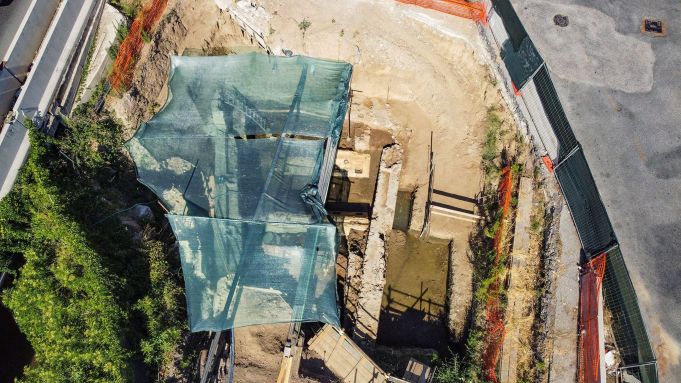Discovery on the Via Tiburtina.
Archaeologists have unearthed the remains of a Roman bridge from the Imperial era during an excavation alongside the Via Tiburtina in north-east Rome.
The discovery came to light during roadworks to enlarge the Via Tiburtina, at the 11th kilometre of the modern road and at the seventh mile of the ancient one, which dates to around 286 BC.
The bridge was connected to the ancient Via Tiburtina and used to cross over the Fosso di Pratolungo, a small tributary of the river Aniene, just before the waters converged.
The excavations have uncovered the central portion of the round arch of the bridge made with massive blocks of travertine laid dry, interconnected by rectangular grooves and reinforced externally by a thick layer of cement.

The arch is missing its keystone, believed to be the result of works carried out in the Middle Ages and the Renaissance era when the bridge was partially demolished and enclosed by high walls.
"The newly found bridge shows us the remains of a valuable work of Roman engineering and will allow us to better understand the ancient topography of the area and its developments over the centuries", Rome's archaeological superintendent Daniela Porro said in a statement.
The excavation and conservation of the bridge is not expected to disrupt the works to enlarge Via Tiburtina, the city said.
Photos courtesy Soprintendenza Speciale di Roma, credit Fabio Caricchia.


















